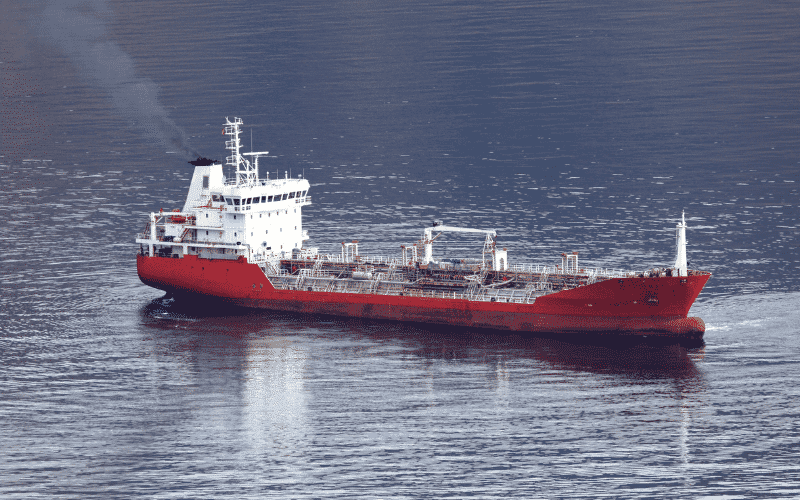What are the requirements for Inert Gas Plant Blower on Tanker Ships?
An essential part of Oil Tanker Vessels, Inert gas system acts as a fire safety system onboard ships. Every oil tanker 20,000 DWT and above or a tanker less than 20,000 DWT but fitted with a crude oil washing system must have an IG system. Know more about the requirements of having an Inert Gas Plant Blower on board a merchant tanker ship.
While ensuring protection against explosion using the I.G System, several individual systems combine to make an efficient inert gas plant whose output must be 4-8 % of oxygen and the majority of nitrogen.

One of the major components of an IG plant is its blower which acts as a supplier of inert gas to cargo holds of the ship. Without the blower, the whole system will fail to perform. An efficient IG blower is thus required to supply inert gas as per the requirements of a cargo tanker.
Regulations and Requirements for I.G Blower
Blowers in an I.G plant must be approved by the administration and must comply with the following:
- Minimum 2 number of blower to be fitted in I.G system.
- The capacity of each blower must be 1.25 times the overall capacity of the cargo discharge system fitted onboard. This is to ensure that Inert Gas is always present in the cargo hold.
- Only 1 blower may be permitted by the administration if it fulfils the requirement stated in the above point i.e. capacity must be 1.25-time cargo pumps and required spares are always available.
- A shut off arrangement must be provided in the suction and discharge connection side of the blowers.
- Generally, the blowers are used for gas freeing hence an n air inlet with blanking arrangement must be provided. At normal operation, blanking arrangement is to be secured.
- Cargo tanks are pressure tested at 2500 mm water gauge and 700mm water gauge on the vacuum side. The blower pressure must not exceed the test pressure else the tank will get damage.
- The minimum pressure to be maintained by the blower is a 200 mm water gauge in a cargo tank.
- There must be a high-temperature alarm (@ around 65 deg c) and a high-temperature trip (@ around 75 deg c) to safeguard the blower.
- The driving media for the blower can be either steam or electrical power.
- The blowers must be located aft of the cargo tanks and cargo pump room of the ship.
Disclaimer :
The information contained in this website is for general information purposes only. While we endeavour to keep the information up to date and correct, we make no representations or warranties of any kind, express or implied, about the completeness, accuracy, reliability, suitability or availability with respect to the website or the information, products, services, or related graphics contained on the website for any purpose. Any reliance you place on such information is therefore strictly at your own risk.
In no event will we be liable for any loss or damage including without limitation, indirect or consequential loss or damage, or any loss or damage whatsoever arising from loss of data or profits arising out of, or in connection with, the use of this website.
Do you have info to share with us ? Suggest a correction
Disclaimer :
The information contained in this website is for general information purposes only. While we endeavour to keep the information up to date and correct, we make no representations or warranties of any kind, express or implied, about the completeness, accuracy, reliability, suitability or availability with respect to the website or the information, products, services, or related graphics contained on the website for any purpose. Any reliance you place on such information is therefore strictly at your own risk.
In no event will we be liable for any loss or damage including without limitation, indirect or consequential loss or damage, or any loss or damage whatsoever arising from loss of data or profits arising out of, or in connection with, the use of this website.

About Author
An ardent sailor and a techie, Anish Wankhede has voyaged on a number of ships as a marine engineer officer. He loves multitasking, networking, and troubleshooting. He is the one behind the unique creativity and aesthetics at Marine Insight.
Latest Marine Technology Articles You Would Like:
- 10 Harmful Effects Of Impure Air On Ship’s Machinery
- 10 Important Things to Check While Starting Fuel Oil Purifier on Ships
- 10 Noteworthy LNG-Powered Vessels
- 10 Points for Efficient Turbocharger Operation On Ships
- 10 Practical Tips to Handle Engine Room Pumps
- 10 Precautions to Take Before Operating Controllable Pitch Propeller (CPP) on Ships
Subscribe To Our Newsletters
By subscribing, you agree to our Privacy Policy and may receive occasional deal communications; you can unsubscribe anytime.
















sir what is the procedure of ig blower water washing,how to ensure blower is cleaned after washing and where does its drain goes to???
@Bhanu:
1. Close the blower suction and discharge valve
2. Check that the drains are clear
3. Open the water washing system on the blower while it is still rotating with the power supply of the driving motor turned off, unless otherwise recommended by the manufacturer
4. Shut down the water washing plant after a suitable period.
The drain will be connected to the sludge tank of the ship.
The requirements have been updated since 2013.
Requirement for all tankers 8000T dwt and above and for Tankers less than 8000T dwt if fitted with a Crude Oil washing system.
The requirement of Oxygen should not be more than 5%.
Sir, could you explain how to make gas free procedure using inert gas blower.